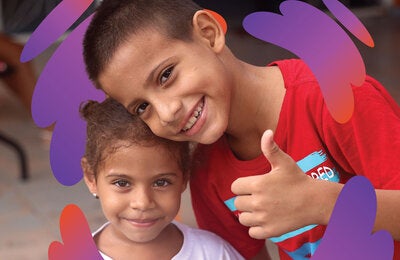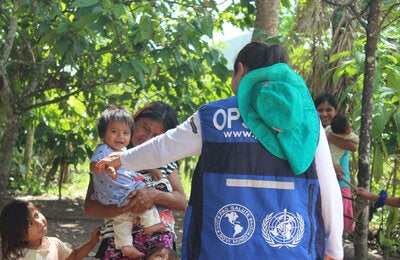A methodology developed by PAHO, already implemented in Paraguay and Bolivia, improves monitoring, helps people stay healthy and prevents them from contracting HIV or from infecting others.
Mexico City, 1 August 2019 (PAHO/WHO)—A new tool has been launched by the Pan American Health Organization (PAHO), that aims to help health services in Latin America and the Caribbean better monitor the health of those at high risk of contracting HIV in order to prevent infection.
“In Latin America, 65% of new HIV infections occur in men who have sex with men, transgender women, female sex workers and their clients and sex partners,” said Mónica Alonso, Regional Advisor on HIV and Sexually Transmitted Infections (STI) at PAHO/WHO. “This is why it is vital they are offered HIV and STI prevention services and properly monitored.”
The ‘monitoring framework for HIV services for key populations’ tool, which was launched last week at the 10th IAS Conference on HIV Science (IAS 2019) in Mexico City, is a new way of monitoring; it establishes indicators and guides the actions of health services to help HIV-negative people stay HIV-free, and HIV-positive individuals have an undetectable viral load.
It will also provide information about any bottlenecks or problems in the quality of care that can limit access to services or keep people from coming back.
The tool proposes a prevention cascade that begins when people at the highest risk of infection are tested. These people are then provided with health services and counseling, including other tests, and are invited to a follow-up consultation 12 months later to see if they are still HIV-free.
The methodology also proposes monitoring the care of the key population of people who live with the virus to help them stay healthy and maintain an undetectable viral load. Anyone with a positive diagnosis is connected with a service, starts treatment, and continues treatment. All these steps should be closely monitored to help them remain in the health system.
The tool developed by PAHO was initially implemented at the national level in Bolivia and Paraguay. Gloria Aguilar of Paraguay’s National Program for the Control of HIV/AIDS/STI shared the experience of the country, which has been using the methodology since February 2019. It is estimated that nearly 15,000 people live with HIV in Paraguay.
“This is the first time we’ve been able to see our data”, said Aguilar, explaining that the information collected to-date “shows us where we should focus our efforts.



